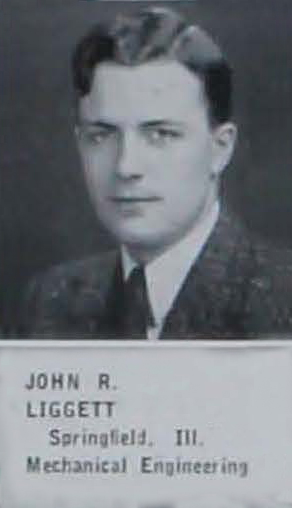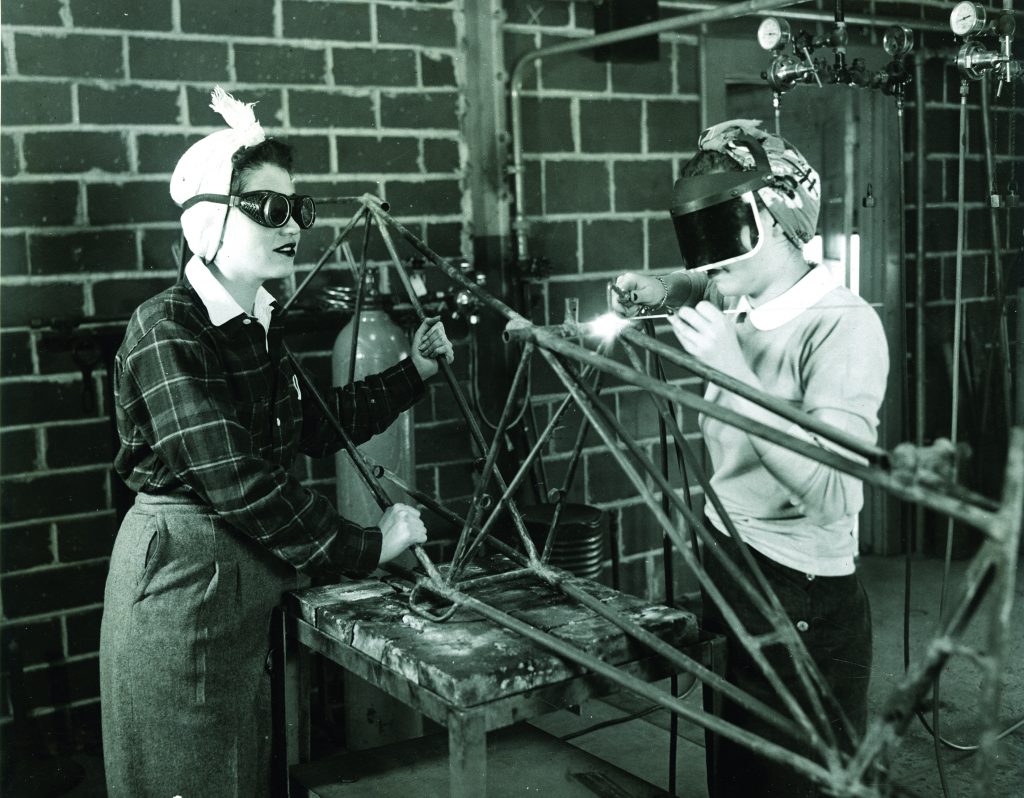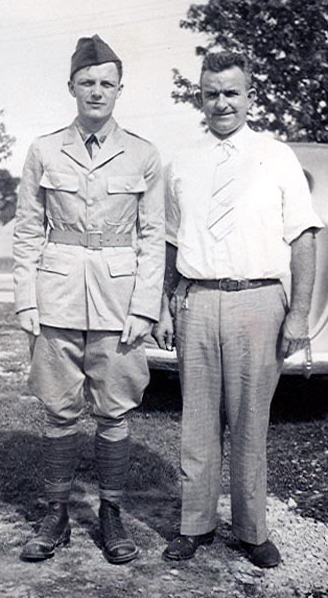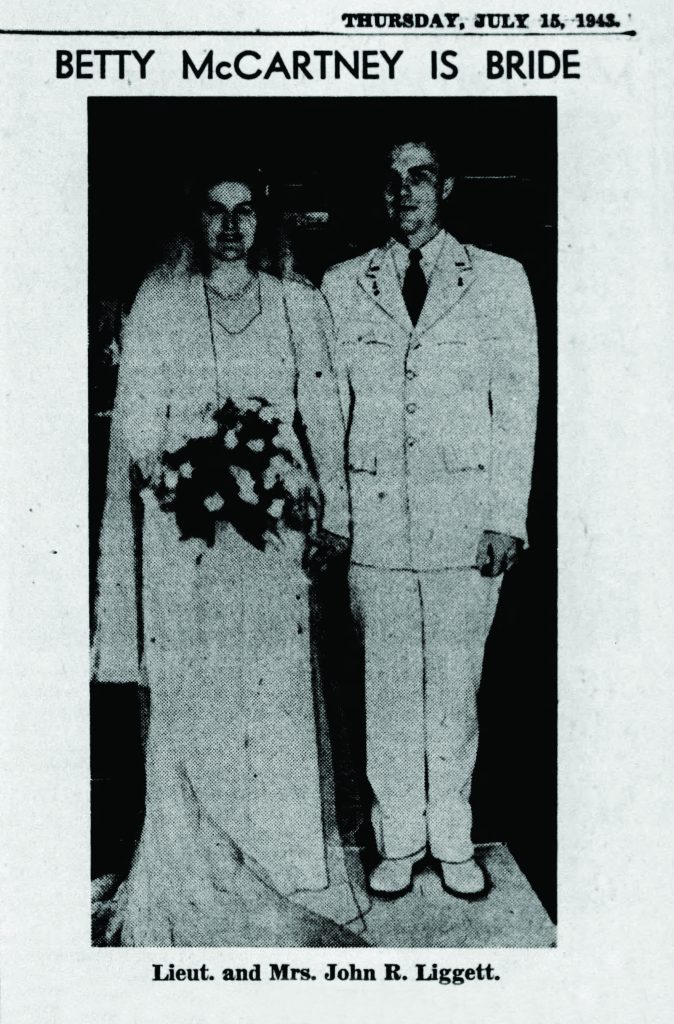A 1999 article in Visions magazine, produced by the Iowa State University Alumni Association,
informed many aspects of the reporting in this four-part series

John R. (Jack) Liggett followed in the footsteps of his father, John T. Liggett, by pursuing studies in mechanical engineering (ME) at Iowa State College.
Nearly half a world away, the tinder was smoldering for what would become the Second World War. In his first year at Iowa State, Jack Liggett was in an ROTC horse-drawn artillery unit. These horse units ended the next year. During his sophomore year in 1940, ROTC training became a requirement for all underclassmen (freshmen and sophomores) as part of a national mandate.
In addition to the ROTC training, Iowa State also offered training in other areas to assist with the war effort. The college’s naval training program added instruction in diesel engine maintenance and construction. The program was directed by mechanical engineering professor David Arm, who also served as head of the department. Following the eight-week training, graduates became 2nd Class Motor Machinists Mates. During this era, Arm, under the direction of Iowa governor George Wilson, served in the 13th Ordinance District for the U.S. Army. He traveled around the state to assess the ability of Iowa companies to manufacture supplies and other materials needed for the war, and contracts were awarded based on his assessment.
In 1943, the Curtiss-Wright Cadettes Program was established at Iowa State to train college women to serve as assistants in the engineering department during the war. Sponsored by the Curtiss-Wright Corporation, the course consisted of work in methods, mechanics, drafting and processing.


Jack Liggett was an active student during his time on campus, pledging to the Tau Kappa Epsilon (TKE) fraternity and walking on as an end on Iowa State’s football team. His son, John M. Liggett said that because of the war fewer men were playing college football and if not for that his father might not have played football at the collegiate level.
“He was a good athlete but wasn’t super focused on sports,” said John M. Liggett. “I remember hearing stories that he’d catch the ball and then immediately get hammered by a defender.”

Just four days before he was set to graduate, Jack Liggett was inducted into the Army. Fortunately, his officers allowed him to attend his commencement ceremony so his parents could watch him walk across the stage to receive his degree in 1942.
Jack Liggett served in the Army Corps of Engineers, working on floating military tanks (which didn’t always float). He was assigned to that unit because of his strong swimming abilities. In the position, he used many of the engineering principles he learned in the ME curriculum. He married Elizabeth (Betty) McCartney in 1943, and in 1947 their son John M. Liggett was born.
Jack Liggett started his career working as an engineer for Timken Bearing in Canton, Ohio. A few years later he started working in technical sales for the first of a number of gear companies, eventually becoming VP of Milwaukee Gear Co. In 1969, he was called by a friend to work as sales manager for a big company headquartered in New York City. A few years later he decided to start a business manufacturing and selling engineered components for machinery with his son John M. Liggett. He fully retired in 1995.
Jack Liggett passed away in 2015 at the age of 95.
READ: Part I John T. Liggett
READ: Part III John M. Liggett
READ: Part IV Ian Liggett